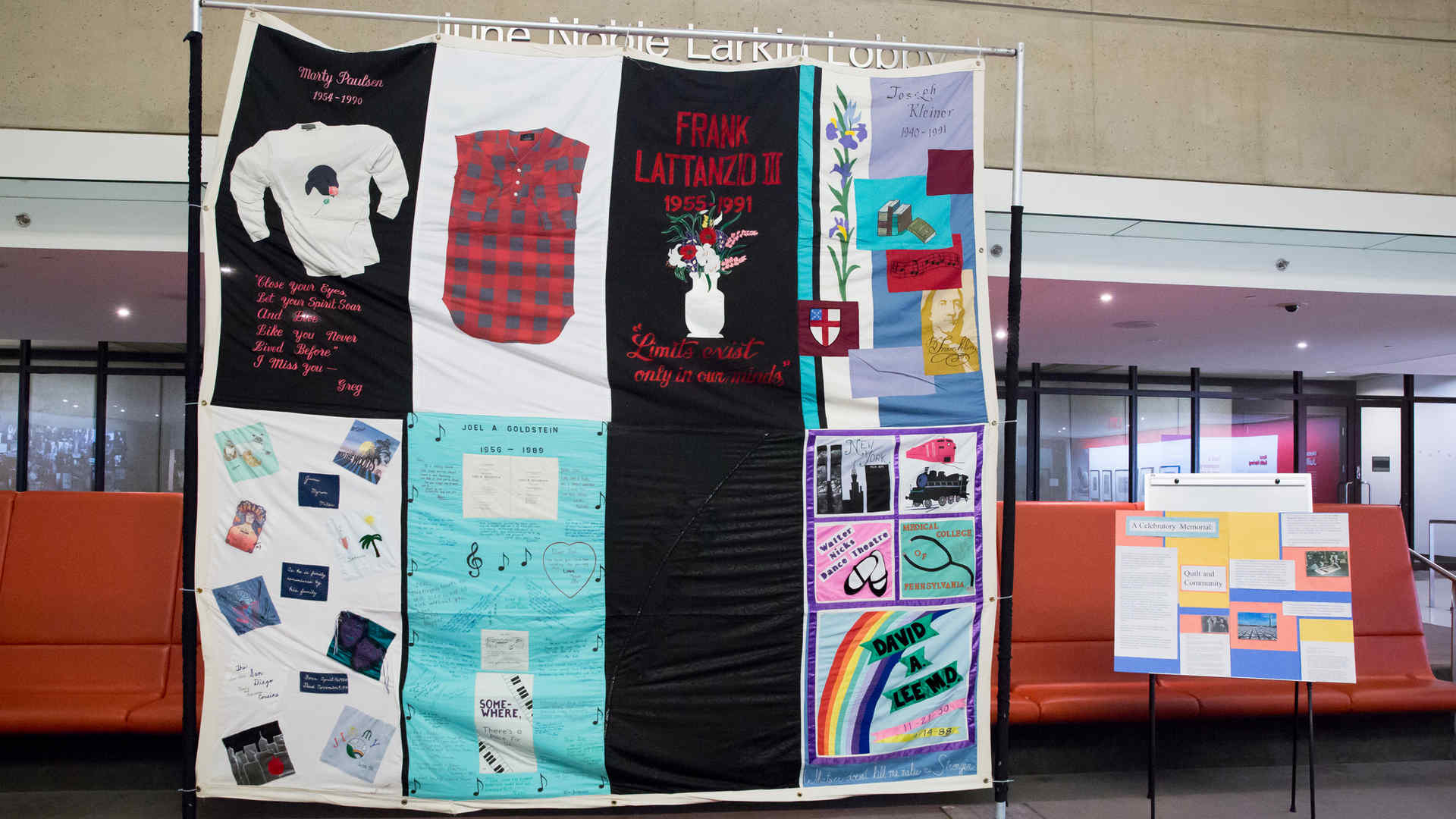
What would it be like to walk among the AIDS Memorial Quilt’s panels, stretched far into the distance on the National Mall? How many names would you pass before finding the one for which you searched?
The AIDS Memorial Quilt, which was begun in 1987 in the midst of the AIDS crisis and now includes some 48,000 panels, remains the world’s largest community art project. In November, Juilliard is hosting a block from the quilt that included the panel of Juilliard’s director of concert operations, Joel A. Goldstein, who died in 1989. It is being exhibited in the June Noble Larkin Lobby, where it's showcased as a testament, a form of HIV/AIDS education, and a work of art. Display materials accompanying the panel were written by Juilliard students enrolled in a new Liberal Arts course called Citizenship, Art, and Politics. Critical to this course are opportunities to explore art’s capacity for transforming civic culture.
The AIDS Memorial Quilt exemplifies this sort of transformation. Family and friends constructed panels to honor the people they loved. In the process, they found a collaborative voice with which they could demand the development of new medications and public health programs. As artist-citizens and as a community newly aware of its power, the quilt’s makers insisted that love, empathy, and determination become the nation’s touchstone civic values.
For Juilliard students, a new generation of artists, most of whom were born after the peak of the AIDS crisis, viewing the AIDS Quilt up close encourages a better understanding of how art can remove obstacles to substantial political change.
Emma Richman, a second-year violinist, holds Harriet and David Colvin and C.V. Starr scholarships; Lisa Andersen is an associate professor of Liberal Arts
A Brief History of the AIDS Quilt
The following is excerpted from the display materials written by the Citizenship, Art, and Politics class.
“It was 1985, and Cleve Jones was frustrated. In his city, San Francisco, over 1,000 gay men had already died from AIDS. Why was help so hard to find? Why were there no government commissions, public health programs, or housing assistance? Why wasn’t the president using his platform to educate Americans about this ascendant crisis?” Later that year, at a gay rights march, “Jones asked fellow protestors to record the names of friends who had died, taping these names to the San Francisco Federal Building. The result looked like a quilt.” Jones, inspired by seeing it and by remembering his grandmother and great-grandmother, “thought what a perfect symbol: what a warm, comforting, middle-class, middle-American, traditional family values symbol to attach to this disease that’s killing homosexuals and IV drug users and Haitian immigrants, and maybe just maybe, we could apply those traditional family values to my family.” The resulting NAMES project began two years later.